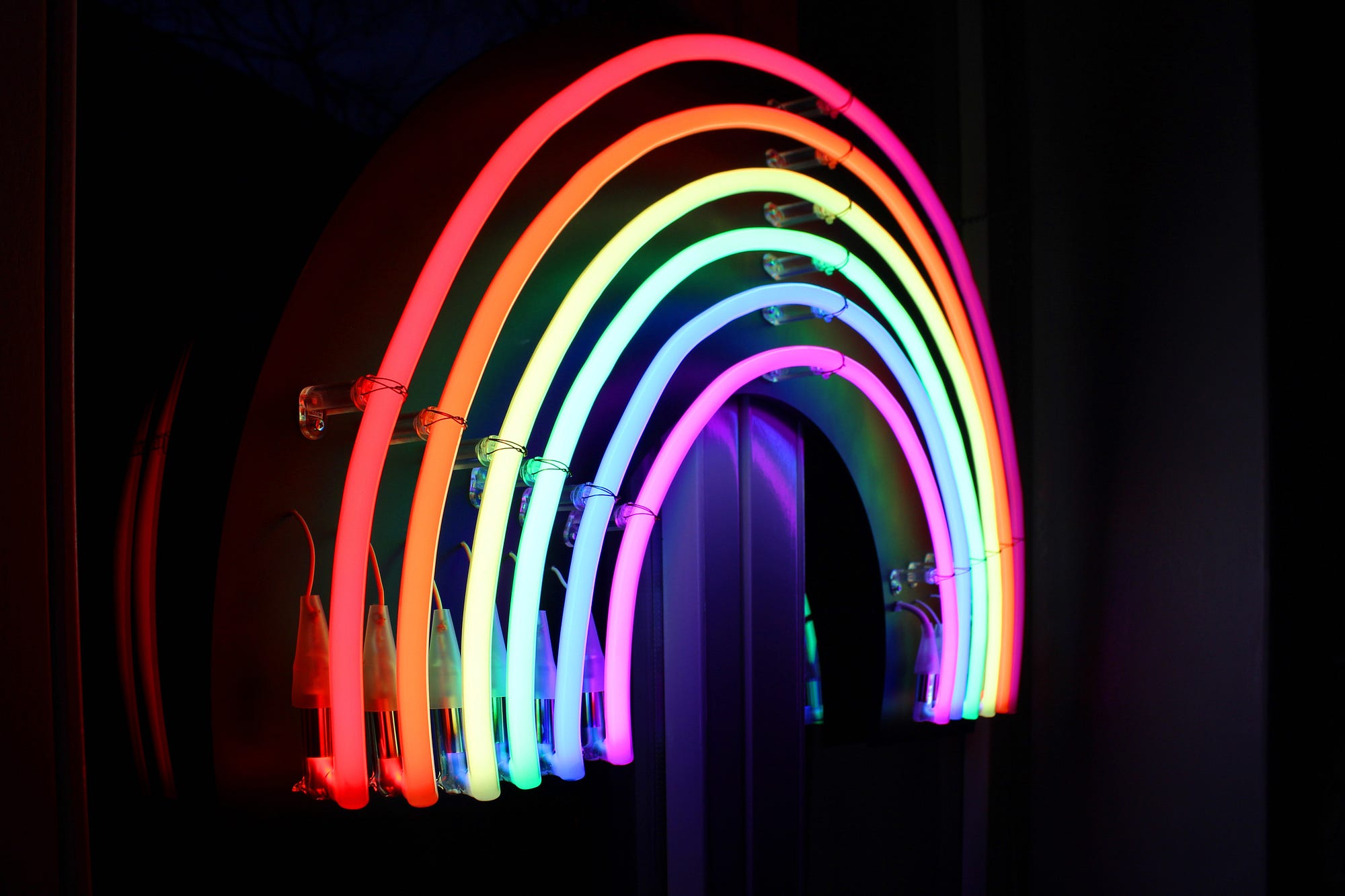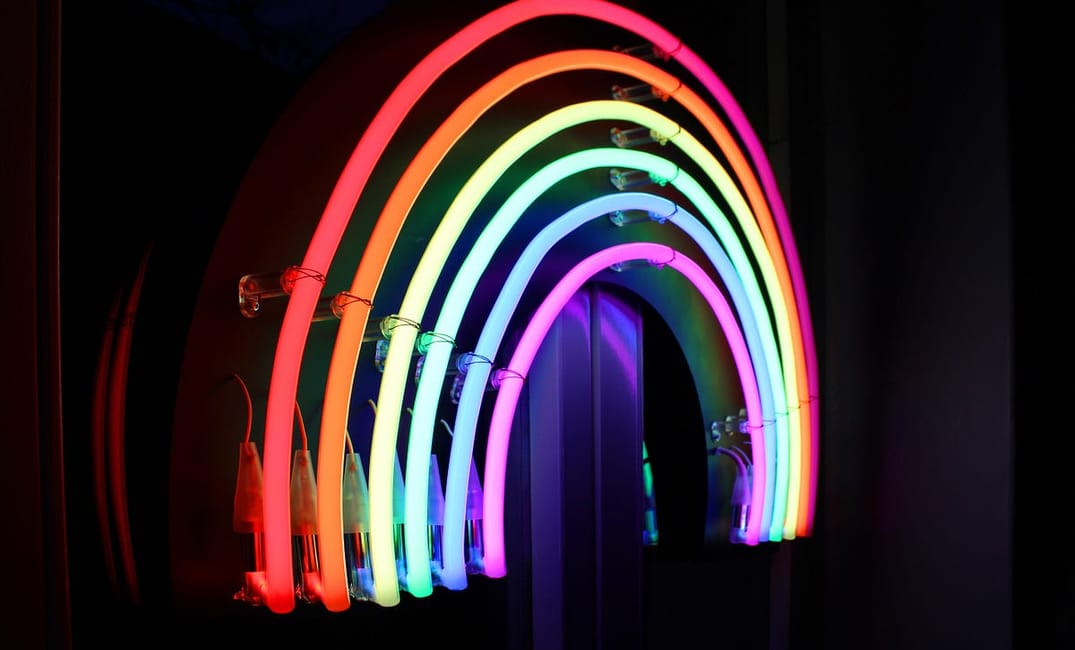
The first time my husband and I attended Pride together, he got hit on more than I did. People mistook us for a gay man and his “beard” — a straight girl hopelessly in love with her gay best friend.
“Why is that guy staring at me?” my husband asked.
“You have a cute butt,” I responded, waving my rainbow flag at the man lusting after my life partner.
Despite appearances, I’m the one who goes to Pride to be with her people.
So let’s get one thing straight (since I’m not): bisexuals do not live a life of endless threesomes, worshipped as the god of unicorns. In fact, my entire coming-out experience has been proof that bisexuals may never get the rainbow cupcakes or “You’re so brave” hugs no matter how progressive our friends claim to be.
Somehow, once we’re in a monogamous relationship, and it may look like we’ve “picked a side,” things get more confusing. We constantly have to choose between coming out over and over again, or being read as gay or straight from the outside—regardless of how we actually identify.
When we do choose to come out, the process is more complicated than just saying, “I’m bi.” Yes, bisexuality means the possibility of falling in love with boys, girls and/or non-binary people. But it’s also being pulled between two worlds, even when you can’t find a place in either one.I long for a third world in which people like me sip martinis while laughing about those crazy monosexuals and their obsession with genitalia.But in the absence of this utopia, it’s easy to lose yourself trying to fit in.
I joined my first LGBTQ community support group when I was 15, even though I was not yet out. After two years of practicing in the mirror, I finally announced my bisexuality at the ripe old age of 17.
“Congratulations on your first step toward coming out,” the group leader quipped. “Who’d like to share next?”
I clearly have much better fashion sense when I go butch.
Jarred by the callousness of my LGBTQ peers, I ended up coming out as a lesbian to my high school class. A few days later, the guy I had a crush on sat next to me in homeroom. “Can I ask you a question?” He said nervously.
“Yes,” I responded, trying my best not to give away my secret by blushing and batting my eyelashes. He had barely spoken to me before.
“Do you like Megan Fox?”
“Oh, thank God,” I laughed. “I thought you were going to ask me how lesbians have sex.” An awkward friendship was born.
Eventually, I confessed my continued insecurity about my orientation to him at our final blowout party before everyone left for college. We kissed, a delicious culmination to four years of pining away. I took it as a sign that Cupid would smile on me as long as I committed to being honest about my bisexuality.
In college, after two years of striking out with lady and non-binary crushes, I once again felt desperate. I shaved off all my hair, started wearing “boyfriend” jeans and bought a red leather jacket from the men’s department in an Urban Outfitters. My jacket showed up on two episodes of The Voice and an entire season of Pretty Little Liars. I clearly have much better fashion sense when I go butch.
I could be myself—the girlfriend who sometimes wears male clothing and can talk for 20 minutes straight about marriage equality.
I was still rocking a shaved head when I started a relationship with my future husband. After being called “sir” by the bouncer at the bar where we met, I didn’t expect to be attractive to a straight guy.
“I like weird girls,” my partner-to-be told me after I asked for an explanation.
“I’m not weird; I’m bisexual,” I said.
“OK, cool.” It wasn’t the best reaction I’ve received, but it’s in the top three.
“Really?” I asked.
“Yeah…that means you like guys, right?” He responded, hugging me tightly.
“Don’t you want a nice, normal girl who will make you cookies and only talk about the weather?” I pressed on.
He told me he thought that sounded boring.
I still remember how calm I felt after that conversation. I could be myself—the girlfriend who sometimes wears male clothing and can talk for 20 minutes straight about marriage equality.
Our wedding was an important crossroads for me. I couldn’t decide between simply enjoying my special day or asserting my identity.
“Will your family be mad if I don’t wear a white dress?” I sighed, glaring at the heteronormative couples in the wedding magazines.
“I’m really more worried about you getting mad,” he responded. “For the sake of everyone else, do what makes you happy.”
So I committed to making my wedding as happy as possible. In my vows, I explicitly stated that the legalization of “gay” marriage informed my decision to tie the knot. Our officiator used a quote from Buffy the Vampire Slayer about the nature of true love. Instead of white, I wore purple. Even though the groom was a straight ally, our wedding was pretty gay.
He never questioned it — he knew he wasn’t marrying a straight girl.
Three years later, he still laughs when I talk about how hot Emilia Clarke is with his guy friends. He doesn’t love that I do this in front of his family, but he accepts it. I may be married, but my bisexuality doesn’t go away.
We both do what we can to contribute to bisexual visibility. When one of his coworkers told their friend group she was joining an LGBTQ lunch group to make friends, he said, “Ishould introduce you to my wife. She’s bi!” To this day, she’s one of my closest friends.
These days, I’m more forceful about asserting my identity than I was as a teenager. With San Francisco Pride about to happen this weekend, I’ve been plotting how to escape bi-erasure. It’s nothing new.
In my day-to-day life, people assume I’m straight unless I take the time to say, “I’m here, and I’m queer.”Sometimes I start to think I’ve been through enough already and question my commitment to constantly re-exiting the closet. I remind myself that as long as bisexuals, our partners and our allies don’t challenge assumptions that we’re gay or straight, kids like my high school self are going to continue being told they’ll eventually pick a team. I have fought too hard to make peace with my identity to sit back, relax and contribute to bisexual erasure.
So I’m making myself visible. This year at Pride, I’m painting the word “queer” on my cleavage and bringing a giant “bisexual” flag instead of the standard-issue rainbow. We’ve all got to start somewhere.
Hey! The Bold Italic recently launched a podcast, This Is Your Life in Silicon Valley. Check out the full season or listen to the episode below featuring Jessica Alter, founder of Tech for Campaigns. More coming soon, so stay tuned!







